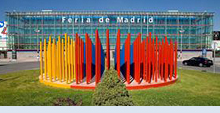 |
European Planetary Science Congress 2012
IFEMA-Feria de Madrid
23 – 28 September 2012, Madrid, Spain |
 |
|
PD1 Rotation, deformation and fluid dynamics of celestial bodies |
| Convener: Nicolas Rambaux | Co-Conveners: Julie Castillo , Jerome Noir |
|
Oral Program
/ Fri, 28 Sep, 11:00–12:30
/ Room Venus
Poster Program
/ Attendance Thu, 27 Sep, 18:15–19:45
/ Poster Area
|
For the past decade, spaceborne and ground-based observations have increased the set of constraints on the rotational properties of terrestrial planets and natural satellites. Rotational motion has become an important and widely used tool in planetology. Different techniques (VLBI, LLR, radar...) have brought insight on the rotational properties of various objects (i.e. Earth, Moon, Mercury, Venus, Phobos, Epimetheus, Titan, and various asteroids, comets...) with increasing resolution. In order to extract the information contained in these observations, models of rotation taking into account spin-orbit couplings, body deformation, and core-mantle couplings have been introduced. These models also incorporate the geophysical properties of these objects, with the purpose to use rotational dynamics as an interior sounding tool.
The objective of this session is to debate of the current theories/models on the deformation and rotational fluid dynamics and their confrontation with observational and experimental data. As ongoing and future missions offer the opportunity to gather high-resolution dynamical measurements of a variety of objects (asteroids, comets, icy satellites, giant planets, and exoplanets), we hope that this session will offer a forum for exchanging ideas on the best observational approach and methodology needed to prepare for this prospective wealth of data.

